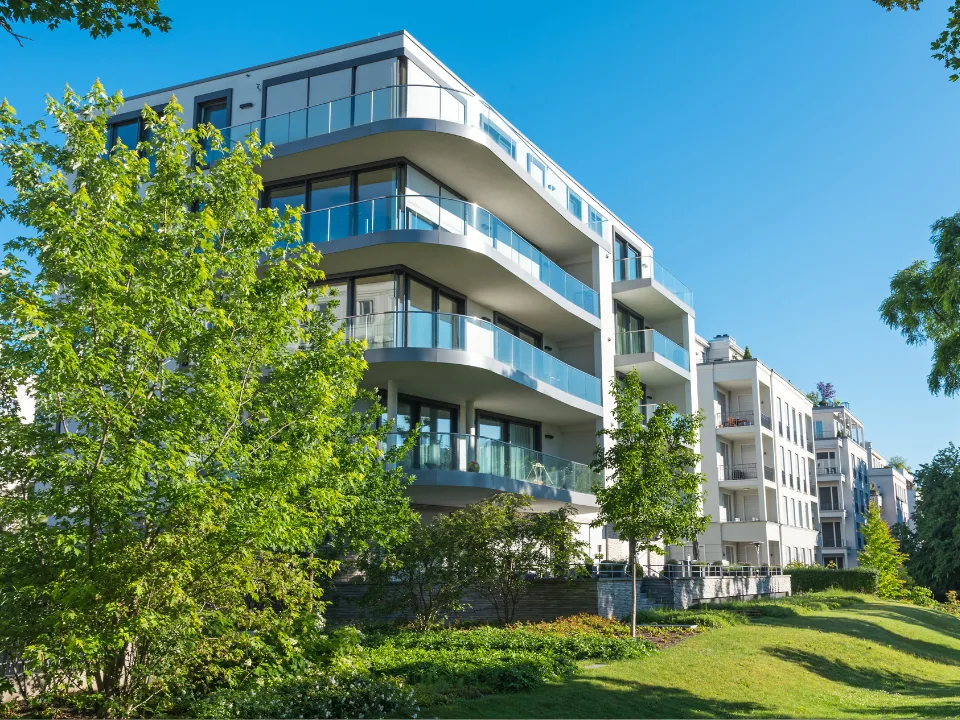Builder Confidence Dips, Yet Hope on the Horizon for Housing Market
Plus: Signature Bank’s $33 billion loan bid ends with little interest in $15 billion of rent-stabilized housing loans.
Good morning. We hope you’re all having a wonderful weekend. As Thanksgiving approaches, we want to take a moment to express our gratitude for each of you, our loyal subscribers. It’s you who made all of this possible, and for that, we are truly thankful.
MORNING BRIEF
-
🏘️ High mortgage rates are impacting builder confidence, but economic signs point to potential improvements soon.
-
🧑💻 This week’s Thesis Driven explores tech & innovation in Q3 earnings calls of leading real estate firms.
-
🏦 Many bidders are avoiding the rent-stabilized portion of Signature Bank’s CRE debt auction.
Still wondering what to wear to the office holiday party this year or searching for that perfect white elephant gift? Fear not; CRE Daily has got you covered.
👋 First time reading? Sign up.
🎁 Want free merch? Share this.
HOUSING MARKET
Builder Sentiment Down Again, but Better Conditions are in View
Recent economic data from NAHB indicates a potential improvement for homebuilders despite high mortgage rates and declining confidence.
Decline in builder confidence: In November, builder confidence for newly built single-family homes, as measured by the National Association of Home Builders (NAHB)/Wells Fargo Housing Market Index (HMI), dropped to its lowest level since December 2022. The index fell six points to 34, marking the fourth consecutive monthly decrease. This decline is primarily attributed to high mortgage rates and increasing costs for homebuilders and land developers.

Record high rates: The rise in mortgage rates since late August has significantly impacted the housing market. Prospective buyers are being priced out, and builders are facing higher financing costs. In response, many builders have reduced home prices to stimulate sales. As of November, 36% of builders reported price cuts, with an average reduction of 6%.
Signs of recovery: Despite the current challenges, recent macroeconomic data suggests improving conditions. The 10-year Treasury rate’s recent decrease may lead to somewhat lower mortgage rates, potentially reinvigorating housing demand. NAHB predicts a 5% increase in single-family starts in 2024, anticipating an easing of financial conditions and improving inflation data.
➥ THE TAKEAWAY
The bottom line: Key Takeaway: November witnessed a decline in all three major HMI indices across different regions, with confidence in new multifamily housing remaining low for the third consecutive quarter and single-family starts showing no growth. Yet, the standout observation lies in the builders’ proactive approach to the market’s hurdles. Through strategic price adjustments and attractive incentives, they are adeptly maneuvering through changing market conditions, laying the groundwork for a possible rebound as the economy shows signs of improvement.
TOGETHER WITH CRE DAILY
It’s never too early to start holiday shopping. Whether you’re buying a gift for a client, spouse, colleague, or the CRE Daily superfan in your life, our winter merch collection has something for everyone.
THESIS-DRIVEN INSIGHT
Key Takeaways from Real Estate Giants Q3 Earnings on Tech Trends

This week’s Thesis Driven offers a comprehensive analysis of the role of tech & innovation from Q3 earnings calls from leading real estate firms. This report synthesizes insights from 17 major publicly traded real estate companies, including REITs and service businesses, to better understand the impact tech is having on their growth and margins.
Diverse Approaches to Technology:
-
Tech-driven focus: Mid-America Apartments (MAA), Avalon Bay, and Lennar prominently featured technology in their narratives, leveraging it for operational efficiency and margin expansion.
-
Limited emphasis: In contrast, Camden Property Trust (CPT), Simon Property Group (SPG), Vornado (VNO), and CBRE Group (CBRE) did not mention technology or innovation in their Q3 discussions.
-
The bigger picture: The disparity in technology integration among firms mirrors the broader real estate industry’s mixed approach to technological adoption.
Emerging Trends in Real Estate Tech:
-
AI and operational efficiency: Lennar and Equity Residential discussed leveraging AI for improved operational performance and tenant screening processes.
-
The bleeding edge: Firms like Avalon Bay and Invitation Homes highlighted technology’s role in enhancing tenant services and operating margins, underscoring the importance of technology in competitive differentiation.
Data Centers: The AI-Driven Real Estate Bet:
-
Looking great: Public market investors are increasingly interested in data centers as a means to invest in the AI-driven future, with real estate companies positioning themselves to benefit from this trend.
-
New investment opportunities: Brookfield (BN), Blackstone (BX), and Prologis (PLD) emphasized their investment in data centers, foreseeing AI as a significant growth driver.
Impact of Remote Work Trends:
-
Never the same again: Companies are acutely aware of the changing dynamics due to remote work trends, especially in tech-heavy regions, impacting both office and residential real estate sectors.
-
Hear ye, hear ye! Companies like Essex Property Group (ESS) and Boston Properties (BXP) tied market demand to shifts in the technology industry. Essex noted technology-driven demand in Bay Area housing, while Boston Properties observed a decrease in tenant demand from tech sectors in certain regions.
The Haves and Have-Nots of Tech in Real Estate:
-
That dragon called inertia: A clear divide is evident between companies heavily investing in technology and those yet to prioritize it, reflecting broader trends in the industry.
-
Looking forward: Thesis Driven plans to track the correlation between tech investment and business performance, recognizing that higher margins may afford some companies more flexibility in tech experimentation.
➥ THE TAKEAWAY
Zoom out: The Q3 earnings analysis showcases a real estate sector at a crossroads, with some companies embracing technology as a core strategy, while others remain hesitant. This divergence signals a transformative period in the industry, where technology and innovation could become pivotal factors in determining future market leaders. You can read a deeper dive, including analysis of specific companies on Thesis Driven.
TRENDING HEADLINES
-
Storage dilemma: The self-storage sector has been impacted by a slow home market, higher mortgage rates, reducing population mobility, and lower demand.
-
New Hollywood Heights: Charles Company is selling 13 acres in North Hollywood with the potential for 920 multifamily units, plus self-storage and retail.
-
Zoning for success: NYC Mayor Eric Adams proposed an overhaul of the city’s zoning regulations to stimulate growth for businesses, with 18 distinct proposals.
-
Hotels in trouble: Dallas-based Ashford Hospitality Trust (AHT) defaulted on $150M in loans in July, with lenders seeking to seize seven distressed hotels.
-
Closing the gap: Ease Capital, a proptech startup, has formed a $450M partnership with Taconic Capital Advisors to provide financing options for small multifamily owners affected by the pullback of regional banks.
-
High-risk loans: Arbor Realty Trust’s (ABR) stock price dropped 8.7% after short-seller Viceroy Research criticized the company’s reliance on high-risk multifamily bridge loans, raising concerns about potential defaults and market valuation.
-
Revving up Vegas: Liberty Media’s investment of nearly $300M in real estate for the Las Vegas Grand Prix is projected to generate $1.3B for the city’s economy.
-
The New Silicon Alley: Northrop Grumman (NOC) plans to invest over $200M in a new advanced electronics manufacturing and testing plant in Waynesboro, Virginia.
-
Building numbers: The Producer Price Index for building materials slipped 0.1% in October, while steel mill products prices decreased 2.5%.
-
Valuation blues: 3Q23 saw declining property valuations, with retail and office leading at 57% and 48.7%, respectively.
THE COLD WAR
Bidders Shun Rent-Stabilized Pools in $33B Signature Bank Loan Sale

(The Real Deal)
The bidding process for Signature Bank’s $33 billion commercial real estate loans recently concluded, with a notable lack of interest in a significant portion of the portfolio: $15 billion in loans tied to New York’s rent-stabilized housing.
Breakdown of loan pools: The Federal Deposit Insurance Corporation (FDIC), managing the sale, divided the bank’s debt into 14 pools. Investors were offered a minority stake, while the FDIC retained majority ownership to protect affordable housing. The three pools encompassed commercial real estate debt, including office, retail, hotels, and market-rate apartments. Nine pools contained rent-stabilized loans, drawing limited attention from bidders.
High interest in commercial debt: The commercial real estate debt attracted considerable interest from institutional investors like Blackstone, KKR, TPG, and Goldman Sachs. However, the rent-stabilized pools were largely ignored. Experts like Thomas Galli, a partner at Duane Morris, expressed surprise at the low interest in these pools, attributing it to the declining value of rent-stabilized buildings and the complex nature of the loans.
Bidding challenges: One key factor deterring potential bidders was a provision that barred firms with any connection to borrowers or assets in the debt pools from bidding. This rule, aimed at preventing manipulation of the bidding process, inadvertently excluded many otherwise qualified entities. The FDIC’s dual objectives of maximizing value and protecting low-income tenants further complicated the bidding process.
➥ THE TAKEAWAY
Balancing competing motivations: The FDIC faces the challenge of balancing its aim to secure the best net present value with its statutory obligation to protect lower-income tenants in the sale. While the lack of interest in the rent-stabilized pools may result in lower bids, the FDIC must also consider the long-term effects of holding onto these loans, such as further deterioration of the properties and decreased valuations.
📈 CHART OF THE DAY

This weekend’s chart of the day is on CRE Daily’s latest Fear and Greed Survey in partnership with John Burns. It shows a trend of aggression in CRE investing: 28% of investors are increasing their stakes despite market volatility, compared to 23% cutting back. Meanwhile, 49% hold steady. The office sector faces a downturn, with 40% more investors reducing than increasing investments, influenced by remote work trends, hiring slowdowns, layoffs, and rising interest rates affecting occupancy and valuations. Read more here.
What did you think of today’s newsletter? |




















